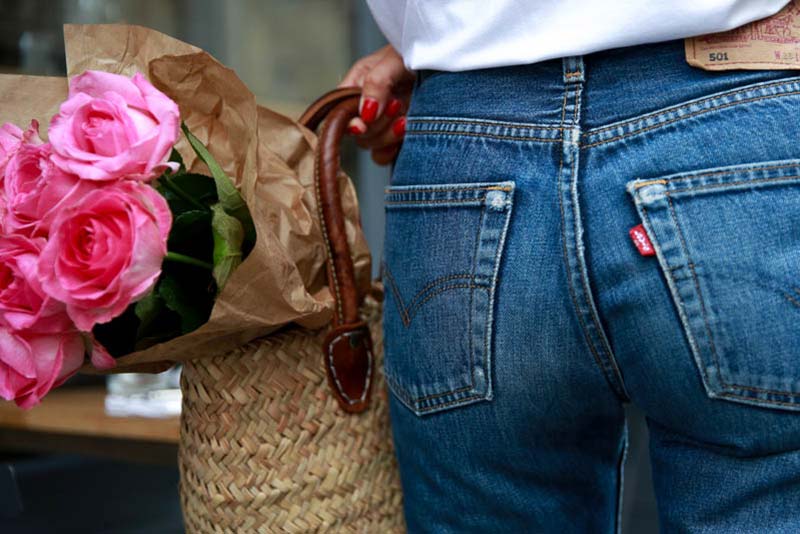Shared from Style Tips, Fashion Advice & Shopping Guides – Glowsly
Take it as a challenge; vintage denim shopping is no picnic, and you really need a helping hand when it comes to identifying your vintage jeans. Here is an all-embracing guide that we have worked up specially for your happy shopping and future come-hither looks. Let’s hit it big!
First off, let’s define the term “vintage clothing”. Vintage is considered to be any piece of clothing that dates back 25-30 years, i.e. if you are up to acquire a pair of vintage jeans you need to inspect jeans manufactured prior to the 1980s.
Levi’s (1853), Wrangler (1904) and Lee (1889) are prominently the most age-old manufacturers of jeans; so when we talk about vintage denim, we usually allude to these brands. But identifying original authentic vintage jeans is a tough nut to crack, given that millions of fake vintage jeans are now circulating around the world both online and in retail stores.
Here is a range of fashion tips that will guide you in recognizing the differences between real and fake vintage jeans, as well as in determining the production date of your vintage jeans. After all, you might get your hands on a pair of authentic Levi’s 501 jeans but dated after the 1980s, which is by far out of vintage zone.
Identifying Vintage Levi’s Jeans
1. Check the Redline! What does it mean? The point is that from the beginning through to the 1980s Levi’s 501 jeans were being woven on old-school shuttle looms, which resulted in self-finished edges. Redline running through the white selvedge, which becomes visible only when cuffed is the calling card of premium Levi’s 501. Afterwards the shuttle looms are replaced with wider projectile loom and Levi’s jeans lose their signature selvedge detailing now coming out with stitched up edges.
Read Next: How to Take Care of Your Vintage Denim
2. Search for capital “E” on red tab! If the red tab onto your right hip pocket features the white logo written with capital “E”, then your Levi’s jeans have their roots prior to 1971 and correspondingly are more valuable than those produced after 1971 with lower case “e”.
3. Scope the buttons! If you hold in hands new Levi’s jeans, you will see three-digit numbers (501 or 555) stamped on the buttons. The things were not like this prior to the 1970s. The buttons were stamped with 2, 5, 6 or the letter W. So three digit numbers indicate either to new Levi’s versions or to fake ones.

4. Check the rivets! On older version manufactured from mid-1960s through to the 1980s, the rivets were silver and flat with LS&CO-SF stamped on them. The newer styles feature copper rivets with circular patterns along with LS&CO-SF.
5. Look at back pockets! In the pursuit of authentic vintage Levi’s jeans, be mindful of the stitched Arcuate detailing on the back pockets, a nuance that becomes shallow on new versions.
6. Read the care tags! The vintage Levi’s jeans featured care tags reading “Shrinks about 10%” written with dark blue letters on plain white. After 1985 the care tags are written with red with Levi’s logo placed on top.
7. Check the inseam: The vintage Levi’s should also have a single felled inseam, a single stitch running down the inner thigh, otherwise you are dealing either with newer versions or replica Levi’s.
Read Next: Best Vintage Jeans for Women
Identifying Vintage Wrangler and Lee Jeans
1. Wrangler – search for bells! Blue bell is the distinctive mark of vintage Wrangler jeans. Look for blue bell tag on the inside of fly and bell etched into back pocket patch for your successful vintage denim shopping.
2. Lee – look at the buttons! On the buttons of Lee jeans produced up to 1949 you can inspect “Union Made,” “Lee Cowboy,” or a laurel wreath.
Photos via Instagram
Images and Article from Style Tips, Fashion Advice & Shopping Guides – Glowsly
#Identify #Vintage #Jeans

